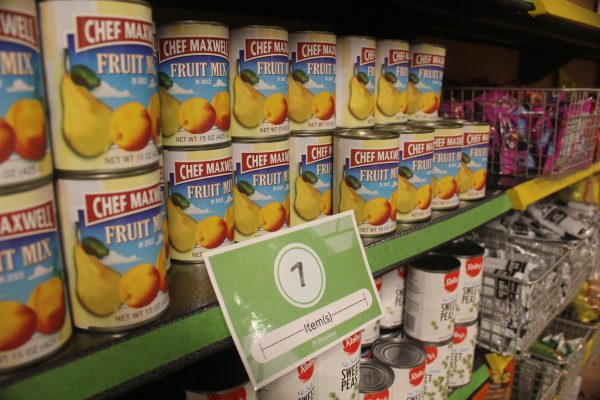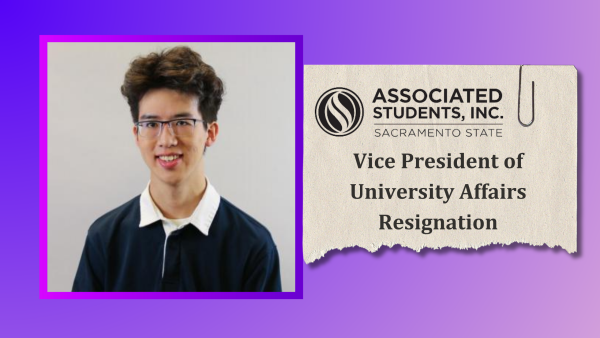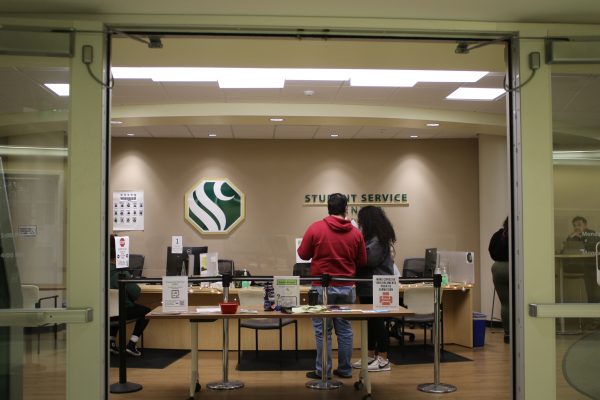Hornet Bookstore expands renting, moving toward online
September 7, 2011
For those who prefer their Kindle or iPad over the heft of a thick, paper textbook, the Sacramento State bookstore now has a solution.
The bookstore is now offering a new service called CafeScribe, which integrates both downloadable textbooks and note-taking and studying all in one cohesive package.
Hornet Bookstore Director Pam Parsons said 46 percent of the bookstore’s titles are now rentable – and it hopes to keep that number growing.
“We first started renting textbooks (in) fall 2009. That semester, 15 percent of our text floor was rent-eligible, and our lofty goal was to one day hit 30 percent,” Parsons said. “We are pleased to have passed that percentage a few semesters ago and we are now working on moving past the 50-percent mark.”
While Rent-A-Text already offers students money-saving opportunities, CafeScribe could provide even more with its textbooks in digital format.
Elio DiStaola, Follett spokesman, provider of the bookstore’s textbooks, said CafeScribe has undergone an extensive revamp.
“Digital textbooks offer a 40 to 60 percent savings (over traditional books),” DiStaola said. “And there are more than 15,000 higher-ed titles available on CafeScribe today.”
CafeScribe’s number of available titles could mean big savings for cash-strapped students in lean economic times.
“The big value for students in digital textbooks, aside from price, is who they are and how they learn. What most people don’t recognize is that what most people call ‘digital’ … is nothing more than a PDF,” DiStaola said. “Is that really enough for people to switch to something that is foreign to them?”
Thus, CafeScribe offers more than just a basic PDF of a print textbook. Students can take notes on their textbooks, and, when the time has come to study for an exam, there is “one-click summarizing of notes or highlights taken in the book,” DiStaola said.
CafeScribe also has an integrated “building block” into Blackboard, known to Sac State students as SacCT, which allows for content delivery through that system. This means that professors can use their own materials and distribute them to students all on one digital platform.
However, this may not be as easy as it looks.
English professor Susan Fanetti checked out CafeScribe and found one big
“I have no resistance whatsoever to electronic texts, and I use Blackboard a lot … so absolutely I would be willing to (use CafeScribe),” Fanetti said. “(But) none of the texts I use were available.”
Parsons said professors and instructors are able to upload their own materials in lieu of a textbook.
“A few of the things that faculty can do with CafeScribe is create their own textbooks, post lessons, monitor progress, provide links and videos and lead study groups,” Parsons said. “There are full instructions provided online (and) CafeScribe also has 24-hour phone support (for) both students and faculty.”
All of these uploaded materials would be available in the same format as CafeScribe’s digital textbooks, which can be downloaded to almost any tablet or e-reader.
“It works on platforms that support a Web-based browser, so you can download an e-book to your desktop, laptop, iPad, some other touch tablets that are coming out now and most smart phones,” Parsons said.
Such a focus on technological availability could foreshadow a significant shift toward digital textbooks and e-books, but neither Parsons nor DiStaola were certain about the future popularity of electronic texts.
“As we start to see the content from publishers shift, demand increases and usage increases will continue to shape how digital is used in classroom,” DiStaola said. “None of us today know what course materials are going to look like in 10 years. Our very definition (of digital textbooks) will certainly change.”
Parsons agreed digital textbooks would likely take time to get a foothold in the higher education textbook market.
“Aside from the digital format, very little will change overnight for textbooks,” she said. “Like today, the majority of textbooks will still be from authors picked up by publishers, who in turn manufacture the title. (Publishers) will continue to decide how, and by whom, (digital textbooks) can be distributed and sold.”
With approximately 25 percent of the bookstore’s total sale volume consisting of rented textbooks for the spring semester, Parsons anticipated the percentage for the fall semester will increase with the Rent-A-Text program expansion.
However, she said the introduction of e-textbooks has not altered how much business the Hornet Bookstore does with traditional printed textbooks, and the bookstore is just aiming for ways to save students money.
“We have seen growth (in digital textbook sales), but for now it is really a way for the Hornet Bookstore to offer students more ways to save through text format options,” Parsons said.
Alexandra Poggione can be reached at [email protected].









































































































































